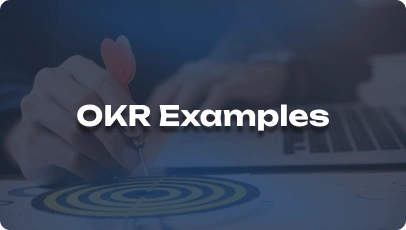Safety Supervisor Job Description: A Comprehensive Guide for HR Professionals
What does a Safety Supervisor do, and why is this role important for your organization? A Safety Supervisor ensures that safety regulations and standards are met within the workplace. They play a pivotal role in preventing workplace accidents and injuries, which is critical for maintaining operational efficiency and protecting your employees.
In this guide, we’ll explore the responsibilities, required skills, and qualifications for a Safety Supervisor. Whether you’re creating a new position or refining your current job descriptions, this guide will equip you with the necessary insights to attract the right candidate.
What is a Safety Supervisor?
A Safety Supervisor is responsible for monitoring and ensuring that the workplace complies with all health and safety regulations. This role involves conducting regular safety audits, training staff on proper safety procedures, and responding to emergencies when they occur. Safety Supervisors are often the first point of contact when a safety issue arises and are essential in creating a safe working environment for all employees.
For HR professionals, it is vital to look for candidates who not only have knowledge of safety protocols but also strong leadership and communication skills to enforce and promote a culture of safety within the organization.
Key Responsibilities of a Safety Supervisor
A Safety Supervisor is crucial in maintaining a safe work environment. Below are the core responsibilities that define this role:
- Conducting Safety Audits: Perform regular safety audits and inspections of the workplace to identify potential hazards and ensure compliance with safety regulations.
- Implementing Safety Policies: Develop, implement, and maintain safety policies and procedures in accordance with federal, state, and local regulations.
- Employee Training: Conduct training sessions on safety protocols, emergency procedures, and proper equipment usage to reduce workplace incidents.
- Incident Reporting and Investigation: Report and investigate all safety-related incidents and accidents, ensuring proper documentation and recommending corrective actions.
- Emergency Response Management: Lead and coordinate emergency response efforts in case of accidents, fires, or other emergencies.
- Safety Equipment Management: Ensure that all safety equipment is properly maintained, inspected, and readily available for employees.
- Compliance Monitoring: Stay updated on current safety regulations and ensure that the workplace complies with OSHA and other relevant laws.
- Risk Assessment: Conduct regular risk assessments to evaluate workplace safety risks and recommend necessary measures to mitigate hazards.
Required Skills and Qualifications
When hiring a Safety Supervisor, it’s crucial to find candidates who possess the right mix of technical knowledge, leadership abilities, and a proactive approach to safety. Below are the skills and qualifications to consider:
1. Essential Skills
- Knowledge of Safety Regulations: Strong understanding of safety regulations and compliance requirements such as OSHA, ANSI, and NFPA standards.
- Leadership and Communication Skills: Ability to lead safety training and effectively communicate safety protocols to all levels of the organization.
- Problem-Solving Abilities: Proactive in identifying and resolving safety issues before they become a significant hazard.
- Attention to Detail: Meticulous in observing safety practices and identifying potential hazards in the workplace.
- First Aid and Emergency Response: Certified in first aid and CPR, with knowledge of emergency response procedures.
2. Preferred Qualifications
- Education: A bachelor’s degree in Occupational Health and Safety, Environmental Science, or a related field is preferred but not mandatory.
- Experience: At least 3-5 years of experience in safety supervision or a similar role, preferably in an industrial or construction environment.
- Certifications: Certifications such as Certified Safety Professional (CSP), OSHA Safety Certification, or similar are advantageous.
- Technical Skills: Proficiency in using safety management software and tools for incident reporting and audits.
3. Personal Attributes
- Adaptability: Quick to adapt to changing safety regulations and workplace environments.
- Resilience: Able to handle high-pressure situations, especially during emergencies or accidents.
- Collaboration: Ability to work closely with HR, management, and employees to ensure the entire organization is aligned with safety protocols.
Take Your Team to the Next Level with Advanced HR Tools!
Streamline & Automate your HR Processes From Hire to Retire
Salary Expectations and Career Growth
1. Salary Expectations
- Average Salary: The average salary for a Safety Supervisor in the U.S. ranges from $55,000 to $90,000 per year depending on location, industry, and experience.
- Location: Salaries tend to be higher in urban areas with a greater concentration of industries, such as New York, Houston, and Los Angeles.
- Experience: Entry-level Safety Supervisors typically earn around $55,000, while those with extensive experience can earn upwards of $90,000 annually.
2. Career Growth Opportunities
- From Safety Supervisor to Managerial Roles: With proven experience and leadership, Safety Supervisors can progress to roles like Safety Manager or Health and Safety Director, where they oversee broader safety strategies.
- Specialization in Specific Industries: Some Safety Supervisors may choose to specialize in industries like construction, manufacturing, or healthcare, becoming experts in those fields.
- Consulting: Experienced professionals may choose to branch out into consulting, providing safety audits and advice to multiple organizations.
3. Skills That Drive Career Growth
- Advanced Certifications: Acquiring advanced certifications like CSP (Certified Safety Professional) or CHST (Construction Health and Safety Technician) can accelerate career advancement.
- Leadership Skills: Developing strong leadership and team management skills is key to moving into senior safety roles.
- Continuous Learning: Keeping up with new safety regulations, technology, and best practices is essential for career growth in this field.
How to Write an Effective Job Description for a Safety Supervisor
Creating an engaging job description is crucial for attracting the right candidates. Here’s how to craft a strong job description for the Safety Supervisor role:
1. Use a Clear Job Title
- Be Specific: Use titles like “Safety Supervisor” or “Workplace Safety Supervisor” to ensure clarity.
2. Write a Compelling Job Summary
- Describe the Role: In one sentence, explain the key function of the Safety Supervisor within your organization, e.g., “We are seeking a proactive Safety Supervisor to ensure compliance with all safety standards and regulations.”
3. Clearly List Responsibilities
- Use bullet points to clearly outline the day-to-day duties, such as conducting audits, ensuring compliance, and managing emergency responses.
4. Outline Required Skills and Qualifications
- Be Specific: Clearly distinguish between required skills (e.g., OSHA compliance) and preferred qualifications (e.g., CSP certification).
5. Provide Information on Work Environment and Benefits
- Work Environment: Mention whether the role is on-site, hybrid, or requires fieldwork.
- Benefits: Highlight benefits like health insurance, paid time off, or opportunities for further certification.
6. End with a Call to Action
- Encourage candidates to apply and mention the application deadline or next steps, e.g., “Apply today to join our team and help us create a safer workplace!”
Conclusion
Hiring the right Safety Supervisor is essential for ensuring workplace safety, reducing accidents, and maintaining compliance with safety regulations. By crafting a well-structured and detailed job description, you can attract skilled professionals who are committed to making a positive impact on your organization.
Safety is not just a requirement but a culture, and your Safety Supervisor will be at the forefront of instilling and maintaining that culture. Make sure you find the right person for the job!






